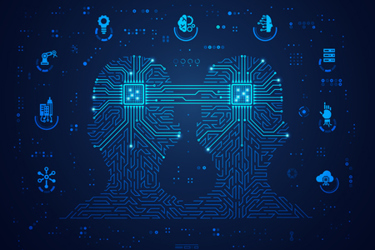Modernizing Water Management: How AI, 3D, And Immersive Reality Transform Water Utility Organizations Through Digital Twins
By Dijam Panigrahi

Water is the essence of life, and managing it effectively is crucial for sustaining communities and ecosystems. Water utility organizations face increasing challenges, including aging infrastructure, climate change impacts, and growing demand. In this digital age, innovative technologies like artificial intelligence (AI), 3D modeling, and immersive reality offer transformative solutions. One such solution gaining traction is the concept of digital twins — virtual replicas of physical assets or systems. Water utility organizations are now harnessing the power of digital twins to revolutionize their operations, improve efficiency, and ensure sustainable water management.
The Rise Of Digital Twins In Water Management
Digital twins have gained prominence across various industries, offering a virtual representation of real-world assets or processes. In water management, digital twins replicate entire water distribution networks, treatment plants, and other infrastructure components. These virtual models are not static; they continuously gather real-time data from sensors, allowing for dynamic simulation and analysis.
AI-powered algorithms analyze data collected by digital twins, providing insights into system performance, predicting maintenance needs, and optimizing operations. By integrating AI with digital twins, water utility organizations can make informed decisions in real-time, leading to enhanced efficiency and cost savings.
Enhancing Infrastructure Planning And Maintenance
One of the primary benefits of digital twins in water management is their ability to optimize infrastructure planning and maintenance. By simulating various scenarios, utility organizations can assess the impact of proposed changes before implementing them in the real world. For example, digital twins can predict the consequences of infrastructure upgrades or changes in water demand, enabling proactive decision-making.
Furthermore, AI algorithms analyze data from sensors embedded within the water infrastructure to detect anomalies and predict equipment failures. By identifying potential issues early on, utility organizations can schedule maintenance activities preemptively, minimizing downtime and reducing repair costs.
Improving Water Quality And Treatment Processes
Water quality is paramount for public health and environmental sustainability. Digital twins enable water utility organizations to monitor water quality parameters in real-time and simulate the effects of different treatment processes. AI algorithms can analyze historical data to identify patterns and optimize treatment strategies for enhanced water quality.
Moreover, digital twins facilitate the testing of new treatment technologies virtually, reducing the need for costly and time-consuming physical experiments. By accelerating the development and deployment of innovative treatment solutions, utility organizations can ensure safer and more sustainable water supplies for communities.
Empowering Stakeholder Engagement And Decision-Making
Effective communication and collaboration among stakeholders are essential for successful water management initiatives. Digital twins provide a common platform for stakeholders, including utility managers, engineers, policymakers, and the public, to visualize and understand complex water systems.
Immersive reality technologies, such as virtual reality (VR) and augmented reality (AR), enhance stakeholder engagement by offering immersive experiences. Stakeholders can explore virtual representations of water infrastructure, interact with data visualizations, and participate in virtual meetings and training sessions.
Furthermore, digital twins enable data-driven decision-making by providing stakeholders with real-time insights into system performance and potential risks. By fostering transparency and collaboration, utility organizations can build trust with stakeholders and garner support for their water management strategies.
Water utility organizations today are working with digital twin solution providers that leverage the advancements in immersive XR interfaces, AI, and cloud technologies, to provide an open, modular, high-precision, and scalable AI-powered cloud platform for fast, accurate, and cost-effective 3D digital twin creation that boosts efficiency, automation, and productivity in manufacturing, operations, training, and sustainment. Leading partners offer an enhanced environment focused on delivering digital twins with millimeter accuracy, 10x faster and at 1/10th the cost compared to conventional methods.
With the proliferation of high-quality sensors and high-resolution color cameras, depth sensors (such as LIDARs), motion sensors, and eye-trackers built into these COTS devices, these partners have access to extreme high-quality spatial data to generate accurate 3D spatial maps in near real-time. Their platforms streamline 3D scanning and digital twin workflows, while using cloud computing to enable affordable hardware to exceed its standard capability.
These solutions overcome mobile device limitations in battery life and computation by processing data in the cloud (on premises/air gapped or remotely such as AWS GovCloud). This enables rapid generation of detailed 3D models with 3–5mm accuracy from sensors in mobile phones, tablets, and XR headsets with full fidelity of the model and no noticeable lag. By moving the most intensive processing tasks to the cloud, the AI-driven software produces high quality point clouds from inexpensive COTS devices. This significantly accelerates digital twin creation compared to traditional methods.
Challenges And Future Outlook
While the potential benefits of digital twins in water management are promising, several challenges need to be addressed. These include data privacy and security concerns, interoperability issues between different software platforms, and the need for skilled personnel to develop and maintain digital twin models.
Looking ahead, advancements in AI, 3D modeling, and immersive reality technologies will continue to drive innovation in water management. As digital twins become more sophisticated and accessible, utility organizations will increasingly rely on them to optimize operations, improve resilience, and ensure sustainable water resources for future generations.
Digital twins represent a paradigm shift in water management, offering utility organizations a powerful tool to optimize operations, enhance resilience, and ensure sustainable water resources. By leveraging AI, 3D modeling, and immersive reality technologies, water utility organizations can harness the full potential of digital twins to address the complex challenges they face. With continued investment and innovation, digital twins will play a central role in shaping the future of water management, enabling us to build more resilient and sustainable communities.
Dijam Panigrahi is co-founder and COO of GridRaster Inc., a leading provider of cloud-based AR/VR platforms that power compelling high-quality AR/VR digital twin experiences on mobile devices for enterprises. For more information, please visit www.gridraster.com.
